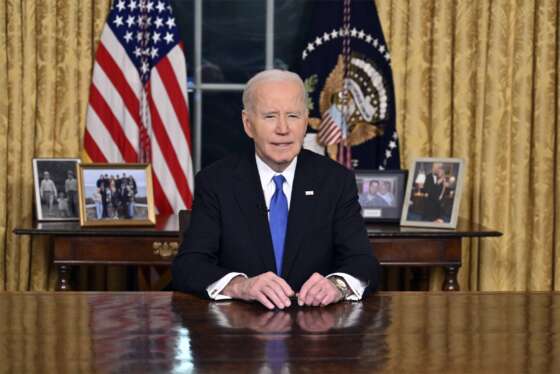Attracting (and Retaining) the 2020 Workforce
How do agencies compete for talent, especially when departments are hiring people with hard-to-find skillsets; people who are well-educated; and people who have...
The federal civilian government has 2.1 million employees. The government is the Nation’s largest employer of doctors. It employs people in jobs ranging from those who protect the nation’s natural resources to those who help educate and oversee historic landmarks to citizens who provide grants for research, housing, and education, and a whole lot more.
The White House expects the number of federal employees to grow by about 1.5 percent in 2017-about 30,000 new employees.
The departments of Veterans Affairs and Homeland Security are expected to see the largest increases. VA is expected to hire almost 17,000 new employees by 2017. DHS is expected to hire more than 4,000 new employees over the next two years.
In fact, nearly agency will see some increase in their workforce over by 2017.
So how do agencies compete for talent, especially when departments are hiring people with hard-to-find skillsets; people who are well-educated; and people who have plenty of opportunities in a tightening job market.
The White House says 56 percent of federal workers are employed in the nine highest-paying private sector occupation groups, such as judges and lawyers, engineers, and scientists, compared to 36 percent of private sector workers.
Another challenge for agencies is the age of their workforce.
The White House says federal employees are getting older. Currently the average age is 45.4 years old, up 2.6 years from two decades ago, and three years older than the average worker in the private sector. And, of course, the statistics show the constant drip, drip, drip of long-time employees retiring from federal service.
Between 2009 and 2013, the annual number of federal retirements steadily increased, rising from 87,907 to 116,039. By 2014, the number of retirements leveled off to 99,710. In 2015, 99,864 federal employees called it a career representing approximately 3.6 percent of the total workforce, including Postal, Judiciary and Congressional workers.
In the meantime, the number of employees under 30 years old, make up only 7 percent of the federal workforce, compared to 23 percent in the private sector.
The ability of agencies to replace workers at the rate they are leaving isn’t keeping up. And there are plenty of reasons why–whether it’s the hiring process, or the perception of government or the overall lack of qualified candidates as requirements for different skillsets change.
But there is help coming. The Office of Personnel Management recently lifted break a 5-year freeze on spending for recruitment, relocation and retention incentives for critical needs such as cybersecurity.
OPM also is becoming more active this year. The agency says it will work directly with agency hiring managers and human resources staff to help them identify skills gaps and find and recruit the right professionals to fill them.
The White House also is putting a heavy focus by agencies on using data to make better decisions about current and future HR needs.
What should agencies do to improve the skillsets and makeup of their workforces?
How should they use data to make decisions about where they recruit? Where they spend money on marketing and outreach?
Moderator
Jas on Miller, Executive Editor, Federal News Radio
on Miller, Executive Editor, Federal News Radio
Jason Miller is an executive editor and reporter with Federal News Radio. As executive editor, Jason helps direct the news coverage of the station and works with reporters to ensure a broad range of coverage of federal technology, procurement, finance and human resource news.As a reporter, Jason focuses mainly on technology and procurement issues, including cybersecurity, e-government and acquisition policies and programs.
Panelists
 Angela Bailey, Chief Human Capital Officer, Department of Homeland Security
Angela Bailey, Chief Human Capital Officer, Department of Homeland Security
Angela Bailey has dedicated nearly 35 years to public service, with close to 30 of those years in human resources. Ms. Baily was appointed as the Department of Homeland Security’s Chief Human Capital Officer (CHCO) in January 2016. She is responsible for the Department’s human capital program, which includes human resources policy, systems, and programs for strategic workforce planning, recruitment and hiring, pay and leave, performance management, employee development, executive resources, labor relations, work/life and safety and health.
 Deborah Kircher, Chief Human Capital Officer, Office of the Director of National Intelligence
Deborah Kircher, Chief Human Capital Officer, Office of the Director of National Intelligence
In October 2011, the Director of National Intelligence appointed Deborah Kircher as the
Assistant Director of National Intelligence for Human Capital and the U.S. Intelligence
Community’s Chief Human Capital Officer. In this position, Ms. Kircher leads the design,
development, and execution of human resources strategies, plans and policies in support of the
men and women who serve in our nation’s intelligence agencies.
 Jill Goldstein, Managing Director, Global Talent and HR BPO, Accenture
Jill Goldstein, Managing Director, Global Talent and HR BPO, Accenture
Jill Goldstein leads the Talent and HR BPO offering globally for Accenture Operations. In this role, Jill helps guide the development and enhancement of Accenture’s end-to-end Talent and HR capabilities across the globe, including talent acquisition and talent development. She joined Accenture in 2006 after serving in corporate HR and finance roles at Sara Lee, Verizon, Ford and Spherion. She began as Accenture’s product manager for compensation and benefits and has since served in all of the offering roles including leading the talent management suite of services and offering development for HR and Learning BPO. In 2011, she was named the global HR BPO offering lead; the following year, her role expanded to include Learning BPO.
Copyright © 2025 Federal News Network. All rights reserved. This website is not intended for users located within the European Economic Area.
Jason Miller is executive editor of Federal News Network and directs news coverage on the people, policy and programs of the federal government.
Follow @jmillerWFED




